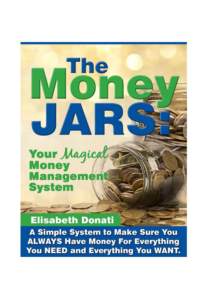Financial Literacy – The Old Paradigm
Many years ago, most parents felt that the only way their adult children would succeed in life was to go to college, get good grades, graduate and get a good steady, secure job.
This approach doesn’t work very well, however, for a kid who wants to be his own boss or absolutely doesn’t want to go to college. Often times the kids who don’t go to college are the ones who start businesses because 1) they didn’t like having a boss, and 2) they thought they could do a better job than the person they were working for.
Though most parents desperately want their kids to go to college, this may not be the best plan of action any longer. If we bear in mind that college is just A way and not THE way for kids to grow into financially savvy adults, perhaps fewer kids would leave high school feeling like failures.
College dropouts often shoulder huge amounts of student loan debt and credit card debt. Even those who finish and graduate from college often leave college with huge amount of debt, as well as unreasonable expectations with regard to the salaries their hard-earned degrees will fetch them.
Adult children are moving home with mom and dad at an unprecedented rate, finding low paying jobs; doing anything to make ends meet. Many aren’t working at all, which leaves mom and dad at a loss for what to do to help their adult children get on their feet so they’ll finally move out and stay out!
This situation would be significantly different if our youth received the right type of financial education before they left home in the first place. The problem is that the current financial literacy model doesn’t necessarily fit the future paradigm of today’s kids. What financial literacy means and what financial education entails needs to shift in order to recession proof our kids for an unknown economic future.
In the past, financial literacy meant teaching kids how to balance a checkbook, create a budget and learn to save.
Now, financial literacy needs to include how to invest in assets that produce passive income, learning that financial freedom means having more money coming in than going out, exploring the wonderful world of entrepreneurship and more. And without a doubt, it needs to include making money on the internet!
It used to be an unspoken expectation that the book-smart kids went to college and the street-smart kids went off to figure out how to make it in the world. Turns out those street-smart kids may be the adults who are now employing a lot of those book-smart kids.
What if we taught kids wealth literacy instead? What if we taught them all the skills they need to be self-sufficient–not just financially, but in all areas of life? And, what if we did this in school to ensure that when children become adults they have the skills necessary to live on their own, happily and prosperously?
 Financial literacy – The Need For A Facelift
Financial literacy – The Need For A Facelift
The face of financial education for kids needs to begin by acknowledging the simple fact that there are more students who don’t graduate from college than do graduate from college.
Financial literacy needs to expand past the typical save, save, save principles that are so regularly accepted in the field. Financial literacy must begin to morph into true wealth literacy and here’s why: More wealthy people in the world have done more good for the earth and the people living on it than any government agency or body has ever done.
If we begin to prepare our kids to create true wealth in their lives early on, we will have fewer problems with poor economies, unemployment and other social problems that stem primarily from money issues.
As a parent, you have the responsibility of preparing your children to be responsible, self-reliant adults. In the current educational culture, take an active role in preparing them to be financially responsible adults. You can accomplish this by making sure you are doing the right things, yourself (setting the best example), and giving them sufficient practice with the tools they need to create their futures (i.e., money).
At the same time, you can become active in your school’s governing body, continually asking the administration to teach more life skills education. Gather support from other like-minded parents to attend meetings to demand wealth literacy in your children’s education. It’s going to take some time, but your child’s future, and the state of our future economy is worth the effort.
To subscribe to this blog, just click here. Once or twice a week, you’ll receive my musings about financial education for kids and teens (and us big kids, too)! Please know that sometimes my ideas will invite you to think differently about money:-).




Elizabeth, what a great article! I’m so glad to see someone in your field take it on. I’ve talked with people from number of financial programs. Way too many are simply confused when I note the connection between jobs and financial literacy.
I’ve posted a link on Facebook, but would you mind if I reposted it on my blog–with attribution of course?
Hi Carol! Thanks so much for this. It really is time we shifted financial literacy education big time. And I’d LOVE for you to repost it on your blog!!! Thanks! Elisabeth
Thanks, Elisabeth. Parent involvement is what drives schools.
I showed my son that putting $30/month into a good fund (at a modest 12% average return) would grow to $350,000 in 40 years. The growth in year 41 would be around $39,000, which puts his yearly deposits of $360 to shame, and is the amount he would LOSE if he waited one year to begin. Saving $360 by waiting a year costs $39,000 down the road.
He started his IRA right away.
Hi Charlie! VERY good tutoring indeed. I wish all parents did what you did. The challenge for many parents is that THEY don’t understand this either. Thanks for popping in! Hope you two are dandy! E
I don’t think you can call 12% a “modest” average return. I usually see figures of 7 – 8% as the average return. Even then, there have been lots of articles about how when you first start investing and when you start taking money out can make a huge difference in your returns.
See this illuminating graphic from New York Times to see what I mean: http://www.nytimes.com/interactive/2011/01/02/business/20110102-metrics-graphic.html
With that said, I still love that you sat down with your son and worked through this with him. It’s a lesson I sorely missed when I was a teenager.
Suzanne
Hi Suzanne,
Yes, the point is definitely that you take the time to show your kids how money grows over time. The rate of return isn’t that significant since kids won’t remember that anyway. We just want them to see that the time to start making your money grow (i.e., the time to put it to work for you) is NOW! Thanks for the comment. I’ll check out the graph. E
Charlie:
I hope it was a Kid IRA (Custodial Roth IRA) that he opened.
Elizabeth,
We spoke a few years back. We discussed East Coast camps, etc. and you put me in touch with a woman in Milton, MA. I haven’t forgotten you and still get and read your emails, thought life with a 7 yr odl,2yr old and running an education foundation keeps me busy. I may have a spot here in Sharon, MA to run a training program and a camp. I’d like to talk with you further. 781-858-8366, or email. Thanks, Dianne Needle
Hi Dianne,
Maine might be fun. I don’t think I’ve been up yonder yet in my travels. We’re thinking October or very early November at the latest. I’ll give you a call and I totally understand buy with those little ones. But they’re only little very a very short period of time. Mine will be 27 Feb. 22 and I have no idea where that time went. Thanks! E
This needs to go to the local papers… and national…
Great article. You need a bigger readership (they deserve you!).
How should we do that?
Thanks. I suppose turning it into many different articles to put on all of the article sites. Wonder how to submit it to different magazines. Wonder which one would be best. NYTimes, LA Times, Wall Street Journal. Maybe we submit to all three as a Letter to the Editor?
Great thoughts, E.
An important piece of this narrative is the role that government backed student loans have done to tuition prices. College tuition is ready to be the next major financial bubble. Unlike most items in the marketplace, the cost of a college degree continues to increase while the value of many of those degrees is decreasing dramatically.
I have always been a huge proponent of every kid pushing to go to a four-year school, however I now have mixed thoughts. For the record, my wife is high school teacher and I am a high school coach at a school with an extremely diverse socio-economic demographic. Within that mix, the biggest group is a working-class crowd with parents who likely did not go to college.
On one hand, many colleges have become an overpriced country club where most of the learning revolves around handling liquor. It is pretty easy to wander through high school and college without really gaining any skills. I also argue that a college education should be far more than a ticket to a job. Therefore, the choice to attend college should be more than a direct financial cost/benefit equation College should teach you to be a responsible citizen, a critical thinker and a lifelong learner. I still believe that, however, I’m not sure colleges are delivering on that promise.
The other side of this issue is that a lot of kids will use the anti-college rhetoric simply as an excuse not to engage in school and develop irresponsible habits. Instead of going to college, they often stay at home and hang around with mostly disengaged peers. So, the discussion about college really has to be carefully done on a case-by-case basis.
Also, there is simply no question that taken over a large group, more education is going to create more earning potential. Certain fields simply require it. (engineering, law, technology, trades, politics, medicine)
What you are arguing primarily is that education needs a “facelift” to include wealth knowledge that is currently being ignored. I agree wholeheartedly. From what I’ve seen, I’m guessing many of those teaching our youth (like most U.S. citizens) do not have these skills themselves. (That’s why I sent my wife to your clinic. 😉 )
I guess the scarier question is this: Given the obvious need for this type of education, is the reason that it does not exist one of ignorance or one of evil intention. I’ll leave that for your next blog.
So nice to hear from you Dave! I love it when you chime in. You’re right on all accounts. My main concern is that college isn’t preparing our kids to be good at anything anymore, unless, as you mentioned, they are studying something specific, like engineering or learning to be a veterinarian, etc. There are just too many kids who go to college because they think they should rather than want to or need to. Thanks! E
Great article on financial literacy paradigm shift.
We at Kid IRA totally agree that a financially literate kid will be a financially successful kid.
Also, college (and typical “work”) isn’t for all kids; which is why a 529b may not be a great option for some parents.
At Kid IRA, we are endorsing another type of paradigm shift. Instead of Learn, Earn, Retire, we are showing kids how to Earn, Live, Retire (Kids earn money from ages 0-18, allowing them to Live out their passion from 18-65, then Retire at 65+)